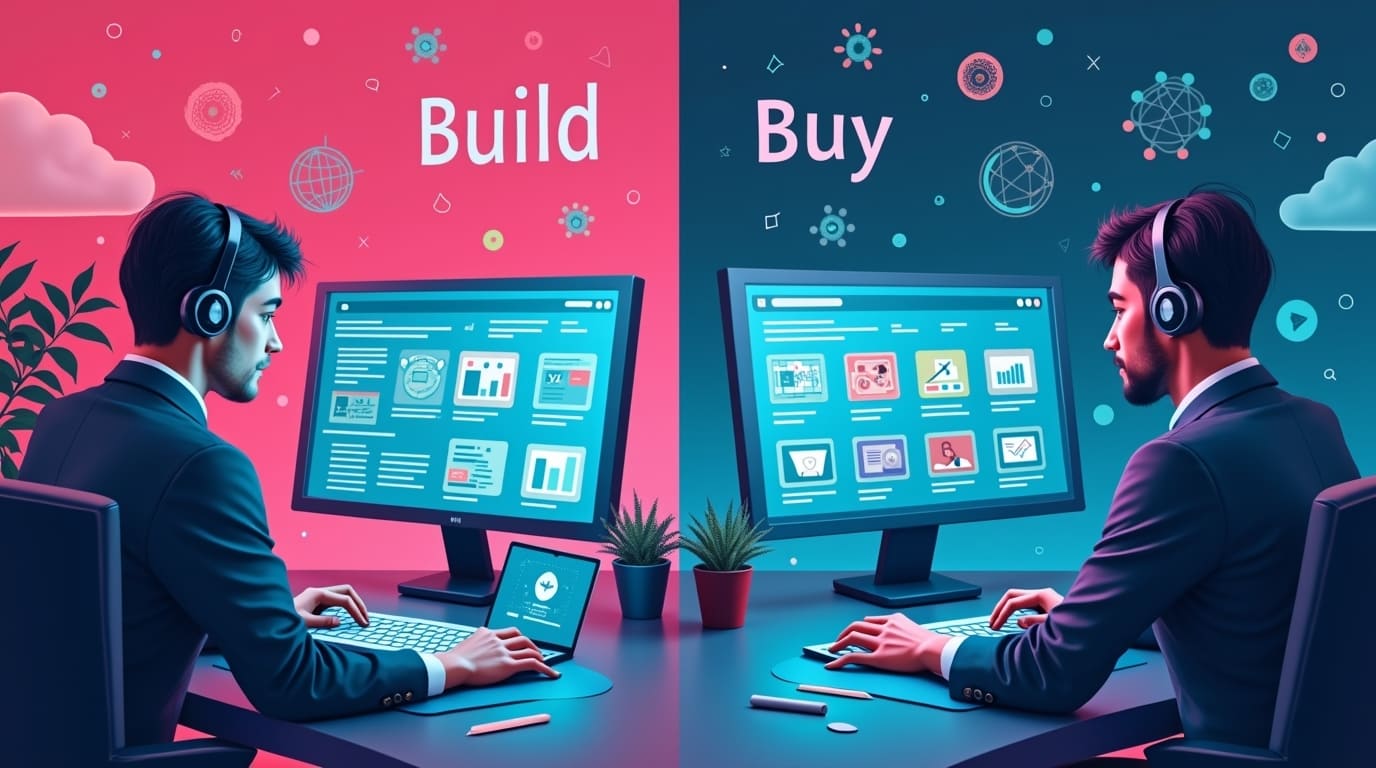Cross platform app development is revolutionizing the way mobile applications are created, enabling developers to build apps that run on multiple operating systems from a single codebase. As the demand for efficient and cost-effective solutions continues to rise, cross platform development has emerged as a viable option for businesses looking to leverage the benefits of both iOS and Android platforms.
However, developers often encounter challenges such as platform-specific bugs, performance issues, and difficulties in maintaining code. Are you facing these obstacles in your app development projects? Whether you’re a startup founder or an experienced developer, understanding the architecture best practices in cross platform app development can significantly enhance your productivity and app quality.
Key Aspects of Cross Platform App Development Architecture
Principles of Effective Cross Platform App Development Architecture
When diving into cross platform app development architecture, there are several core principles to keep in mind that will significantly improve your app’s scalability, maintainability, and overall performance:
- Modularity: Structure your app into smaller, manageable components. This not only enhances code readability but also allows for easier modifications and updates.
- Reusability: Aim to write code that can be reused across multiple platforms. Utilizing shared libraries can help reduce redundancy while speeding up the development process.
- Performance Optimization: Ensure that your application runs smoothly across all platforms by optimizing user interfaces and conserving resources. Leverage platform-specific features only when necessary to maintain performance without significant trade-offs.
- Version Control: Implement a version control system (VCS) to track changes in your codebase, making collaborations seamless and rollbacks simpler when issues arise.
- Testing Integration: Build your architecture with testing in mind. Automate testing processes for both individual modules and the app as a whole to ensure that updates do not introduce new bugs.
By understanding and implementing these principles, developers can create robust architectures that stand the test of time, benefiting both immediate project needs and future scalability.
Tools for Cross Platform App Development Architecture
Choosing the right tools is crucial for building an effective cross platform app. Here are some popular frameworks and tools that can streamline your development process:
- React Native: This framework allows developers to build mobile apps using JavaScript and React. It provides a native feel by rendering components as native views, which enhances performance and user experience.
- Flutter: Created by Google, Flutter employs the Dart programming language for building natively compiled applications. It has a rich set of widgets and is known for rapid development cycles thanks to its “”hot reload”” feature.
- Xamarin: This Microsoft-owned framework enables developers to create apps with C#. Its integration with Visual Studio makes it a go-to option for .NET developers looking to work within cross platform environments.
- Ionic: A powerful HTML5 SDK, Ionic allows developers to create hybrid mobile apps using web technologies like HTML, CSS, and JavaScript. Its wide range of plugins aids in accessing native device features.
- Apache Cordova: Previously known as PhoneGap, this toolkit is used for building mobile applications using HTML5, CSS, and JavaScript. It provides access to device capabilities, making it suitable for basic applications.
Using these tools effectively can greatly reduce development time while enhancing the quality of cross platform applications.
Designing Reference Architecture for Mobile Apps
Components of a Strong Reference Architecture
A well-structured reference architecture serves as a blueprint that guides the development of your mobile app. Key components include:
- APIs: Application Programming Interfaces play a vital role in enabling communication between different software applications and services. Properly designed APIs are essential for building a scalable app architecture.
- Data Storage Solutions: Choose an appropriate storage solution that can effectively handle your app’s data requirements, whether it be SQL databases, NoSQL databases, or cloud storage solutions. Consider factors like data retrieval speed and scalability.
- User Interfaces (UIs): Design responsive UIs that provide users with a seamless experience across devices. A good UI should be intuitive and accessible, ensuring that users can easily navigate the application.
- Authentication and Security: Implement robust authentication mechanisms, including OAuth or JWT, to secure user data and ensure privacy. Security should be a top priority, especially for apps handling sensitive information.
- Analytics and Monitoring: Integrate analytics tools to capture user behavior and app performance metrics. Monitoring these metrics can provide insights into how the app is used, which can guide future improvements.
Case Study of Reference Architecture in Action
Take the example of a popular cross platform fitness application, which served millions of users across both Android and iOS platforms. By employing a strong reference architecture, the development team ensured that:
- APIs were designed to handle high volumes of data transactions, allowing users to sync their fitness data with cloud services seamlessly. The architecture facilitated integration with third-party wearables, enhancing user experience.
- Data storage solutions were upgraded to use cloud services, which reduced the need for local storage and enabled users to access their data from any device. This decision significantly improved user retention and satisfaction.
- User feedback was continuously analyzed through integrated analytics, allowing the team to iteratively improve the app based on user needs and behavioral patterns.
This case study underscores the importance of a robust reference architecture. By focusing on critical components and listening to user feedback, the development team not only built an effective application but also positioned it for future growth.
Choosing a Software Development Company for Cross Platform Apps
What to Look for in a Software Development Company
When selecting a software development company for cross platform app development, it’s critical to assess several key qualifications:
- Experience with Cross Platform Tools: The company should demonstrate proficiency with the frameworks and tools relevant to cross platform development, such as React Native or Flutter.
- Portfolio of Past Projects: Review their portfolio to check for previous projects that align with your goals. Look for diversity in their work, showcasing the ability to adapt to different industries.
- Client Testimonials and Feedback: Seek feedback from previous clients to gauge the company’s reliability, communication, and problem-solving capabilities. A satisfied client base is often an indicator of a strong partnership.
- Technical Expertise: Ensure the company has a robust internal team with the necessary skills in software architecture, design, user experience (UX), and quality assurance.
By thoroughly evaluating these aspects, you can make an informed choice regarding which software development company aligns best with your project’s vision and requirements.
Questions to Ask a Mobile App Development Company
Before finalizing a collaboration with a mobile app development company, consider asking the following essential questions:
- Can you share examples of your previous work? This question helps you understand their expertise and whether their style aligns with your vision.
- What is your development process? Knowing their methodology (Agile, Scrum, etc.) gives you insight into how they manage projects and adapt to changes.
- How do you handle testing and quality assurance? This is critical, as robust QA processes minimize bugs and enhance the application’s reliability.
- What support will you provide post-launch? Inquire about ongoing maintenance and support options to ensure your app remains up-to-date and functional.
- How do you ensure security and data privacy? Understanding their approach to security is crucial, especially if your app processes sensitive information.
Each question plays a fundamental role in helping you gauge their capability and reliability, ensuring you choose a partner who can turn your vision into reality.
Best Practices in Mobile App Development Company Collaboration
Overcoming Common Collaboration Challenges
Collaborating with a mobile app development company can present challenges, including communication barriers, differing expectations, and misaligned priorities. Here are some practical solutions to enhance collaboration:
- Establish Clear Communication Channels: Utilize project management tools like Trello or Asana to centralize communication and track progress. Regular check-ins can also help maintain synchrony between teams.
- Define Roles and Responsibilities: Clearly outline the roles of each team member to prevent overlaps. This clarity ensures that everyone knows their tasks and deadlines.
- Utilize Collaborative Tools: Leverage shared documents, version control, and real-time collaboration tools (like Slack or Microsoft Teams) to streamline workflows.
- Encourage Feedback Loops: Foster an environment where both parties feel comfortable providing and receiving feedback. Regular discussions around progress and roadblocks can keep the project aligned with its goals.
By addressing these common hurdles proactively, teams can lay the foundation for a strong partnership conducive to successful app development.
Building a Productive Partnership with Your Software Development Company
To foster a productive partnership with your software development company, consider implementing these strategies:
- Set Mutual Goals: Establish shared objectives that align with both your business vision and the development goals. This common purpose enhances commitment and drives the partnership forward.
- Maintain Transparency: Openly discuss challenges, timelines, and progress updates. A transparent relationship minimizes misunderstandings and builds trust.
- Encourage Collaborative Problem Solving: When issues arise, approach them collaboratively rather than defensively. Engaging in discussions to find solutions together cultivates a stronger bond.
- Celebrate Milestones Together: Recognize significant achievements in the project lifecycle. Celebrating milestones boosts team morale and reinforces the value of the partnership.
Building a solid relationship between you and your development company can lead to successful outcomes and innovative results.
Testing Strategies for Cross Platform App Development
Key Testing Techniques in Cross Platform App Development
Effective testing is paramount for cross platform app development, ensuring that applications perform as expected across different devices. Here are some key techniques to consider:
- Unit Testing: Break down your application into individual components and test each one in isolation. This helps identify issues at an early stage and ensures functionality.
- Integration Testing: After unit testing, verify that the integrated components of your application work coherently. This involves assessing how modules interact with each other.
- User Acceptance Testing (UAT): Involve real users in the testing process to provide feedback. UAT helps to ensure that the application meets user expectations and usability standards.
- Performance Testing: Examine how the app performs under various conditions. This includes load testing, stress testing, and responsiveness checks, critical for ensuring a smooth user experience.
Implementing a comprehensive testing strategy at various stages of development helps ensure higher quality outputs and reduces the likelihood of bugs in the final product.
Automation Tools for Efficient Testing
Utilizing automation tools can greatly enhance the efficiency of your testing process. Here are some notable tools for automating testing in cross platform app development:
- Appium: An open-source tool for automating mobile applications on both iOS and Android. It allows for cross-platform testing by writing tests in multiple programming languages.
- Selenium: While traditionally known for web testing, Selenium can be adapted for mobile web applications and some hybrid applications, enhancing your testing capabilities.
- TestNG: This testing framework is suitable for a range of testing types including unit, functional, and integration testing. Its XML configuration makes it flexible for various testing conditions.
- Katalon Studio: An all-in-one automation solution that can be used for web, API, and mobile testing. It offers built-in keywords and allows for easy integration with other tools.
- Robot Framework: This generic open-source automation framework is ideal for cross-platform mobile app testing. Its keyword-driven testing approach allows for easy scalability and maintenance.
Leveraging these automation tools not only saves time but also enhances the consistency and reliability of your testing process.
Future Trends in Cross Platform App Development
Emerging Technologies Shaping Development Standards
As the landscape of cross platform app development evolves, several emerging technologies are shaping future standards:
- Artificial Intelligence (AI): AI can enhance user experience through personalized content recommendations, chatbots, and intelligent search functionalities. Integrating AI into cross platform apps can significantly improve engagement and user satisfaction.
- Augmented Reality (AR): The use of AR in mobile applications is on the rise, offering users immersive experiences. With platforms like ARKit and ARCore, developers can integrate AR features seamlessly into cross platform apps.
- Machine Learning (ML): Integrating ML algorithms into applications can help in analyzing user data, predicting behaviors, and providing tailored experiences to users.
- Internet of Things (IoT): As IoT devices proliferate, the need for cross platform applications to control and monitor these devices becomes increasingly relevant. Developers should consider how their applications can interact with IoT infrastructure.
Preparing for the Future: Adaptation Strategies
To stay ahead in the field of cross platform app development, consider the following adaptation strategies:
- Embrace Continuous Learning: Stay updated on the latest trends, tools, and best practices in cross platform development. Online courses, webinars, and developer communities can provide valuable insights.
- Experiment with New Technologies: Don’t shy away from exploring and implementing new technologies, such as AI and AR, into your projects. This experimentation can provide a competitive edge.
- Create an Agile Development Process: Enhance your adaptability by embracing agile methodologies. This allows teams to respond swiftly to changes in tech and user expectations.
- Focus on User-Centered Design: Prioritize user experience by constantly iterating on design and functionality based on user feedback and behavior analysis.
By employing these strategies, developers can ensure they remain relevant and competitive in the ever-evolving landscape of application development.
Conclusion
In summary, embracing the architecture best practices for cross platform app development is crucial for achieving high-quality applications that stand the test of time. By focusing on principles of effective architecture, making informed choices in tool selection, and designing robust reference architectures, developers can enhance their workflow and outcomes. Collaboration with a software development company can further streamline the process, ensuring expertise is maximized at all stages of development.
“”Wildnet Edge”” stands out in this arena as an AI-first company, helping clients navigate the complexities of cross platform app development with customized solutions tailored for success. Whether you are starting a new project or seeking assistance in enhancing an existing app, consulting with experienced professionals can lead to remarkable results. It’s time to unlock the full potential of your application development!
FAQs
Cross platform app development allows the creation of mobile applications that run on multiple operating systems, such as iOS and Android, from a single codebase.
It involves structuring an app’s development to include shared codebases, while making specific adaptations for different platforms to enhance functionality.
A dedicated company brings expertise, experience, and efficiency to app development projects, ensuring higher quality outcomes through streamlined processes and skilled personnel.
Best practices include consistent communication, iterative feedback, robust testing throughout the development lifecycle, and focusing on user experience.
Research portfolios, seek client reviews, and conduct interviews to assess their capabilities, ensuring they align with your project’s vision and requirements.

Nitin Agarwal is a veteran in custom software development. He is fascinated by how software can turn ideas into real-world solutions. With extensive experience designing scalable and efficient systems, he focuses on creating software that delivers tangible results. Nitin enjoys exploring emerging technologies, taking on challenging projects, and mentoring teams to bring ideas to life. He believes that good software is not just about code; it’s about understanding problems and creating value for users. For him, great software combines thoughtful design, clever engineering, and a clear understanding of the problems it’s meant to solve.
 sales@wildnetedge.com
sales@wildnetedge.com +1 (212) 901 8616
+1 (212) 901 8616 +1 (437) 225-7733
+1 (437) 225-7733































